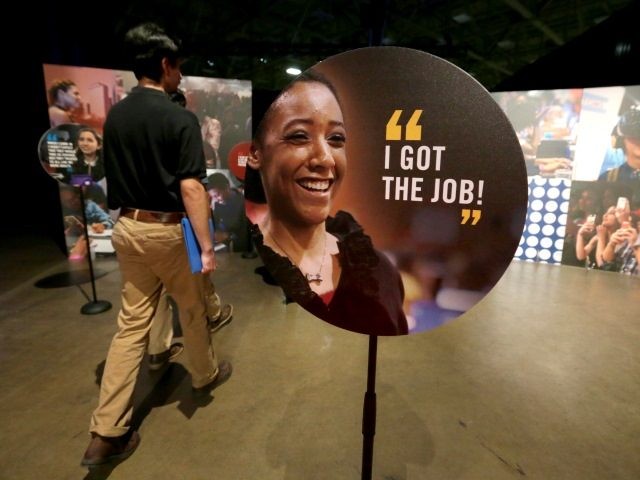A senior economist with the Federal Reserve Bank of Dallas says the Texas economy is “firing on all cylinders” for 2018. He forecasts strong job growth, low unemployment, and other potential gains that may come in response to the Trump administration’s recently passed federal tax overhaul plan.
“The Texas economy is firing on all cylinders going into 2018,” said Keith Phillips, assistant vice president and senior economist for the Dallas Fed. He presented the annual Texas Economic Outlook on Tuesday to political and business leaders at the bank’s San Antonio branch and called the projected growth “broad-based” and across regions and industries.
Phillips predicted job growth of 3 percent this year. This translates into roughly 366,000 new jobs. The Dallas Fed calculated Texas added 305,900 jobs in 2017 — a growth rate of approximately 2.5 percent. Last year, the state ranked third in the nation for job growth after falling below the national average in 2015 and 2016.
Phillips said the pickup was largely the result of rebounds in the energy and manufacturing sectors. Breitbart Texas reported the Texas manufacturing industry posted record gains in December, reaching its highest point in more than 11 years.
Also, in 2017, employment growth expanded across the Lone Star State’s major metropolitan areas. The Dallas Fed accounted for the strongest gains in Austin and Dallas, followed by San Antonio, which saw three percent growth. Houston rebounded from weaknesses in 2015 and 2016. According to Phillips, the devastation caused by Hurricane Harvey only temporarily impacted job growth in the region.
Breitbart Texas reported the state’s jobless rate hit a 40-year low with unemployment dropping to 3.9 percent in October. However, it fell to 3.8 percent in November, the lowest since 1976, according to the Dallas Fed. An increasingly tight labor market could present a headwind to economic growth in 2018, said Phillips.
“With an unemployment rate at historical lows, the biggest challenge facing the state may be finding enough workers to fill job openings,” he added.
Although Phillips said it was “hard to find any areas of weakness” in the state’s immediate economic future, he cautioned the biggest risks to this forecast would be a sustained drop in oil prices to below $40 per barrel or policy changes that cause a significant disruption in trade. Currently, the Dallas Fed anticipates that West Texas Intermediate (WTI) crude oil will close at $59 per barrel by year-end 2018.
“If oil prices remain above $40 per barrel, Texas likely will see continued broad-based growth across regions and sectors,” stated Phillips.
He also commented that if the recently passed federal tax overhaul results in more corporate repatriation and investment in the United States, then Texas can expect to grab a larger share of those gains compared to other states, according to the San Antonio Business Journal. President Donald Trump signed the GOP tax reform bill into law on December 22 and it went into effect on January 1.
Phillips underscored that Texas has a higher potential for growth than other states due to lower corporate tax rates, changes in personal income taxes, and expectations that the energy and manufacturing sectors will continue to fuel the state’s economic growth.
“If there is some repatriation of profits to the U.S. and there is greater incentive for investment, Texas is one of those faster growing states that have a higher potential for growth and so, we should see a disproportionate share of gains in investment,” said Phillips. “Texans, in general, pay less for state and local taxes than most states. Not being able to write off some of those taxes hurts people in those other states more than Texas.”
Follow Merrill Hope, a member of the original Breitbart Texas team, on Twitter.

COMMENTS
Please let us know if you're having issues with commenting.